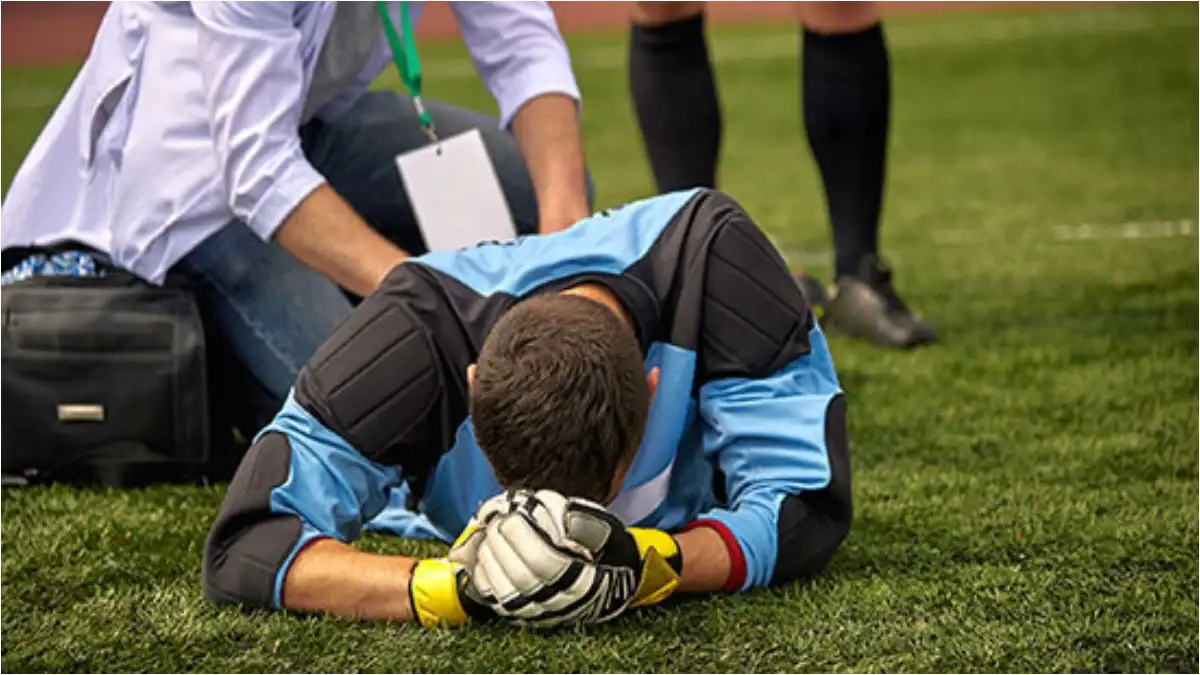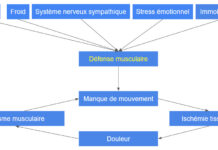Osteopathy, an alternative medical discipline, is today positioned as an effective ally in the management of sports injuries. With its holistic approach, it aims to treat the body as a whole rather than simply targeting symptoms.
Introduction
This integrative approach takes into account the interactions between different parts of the body, seeking to restore balance and optimal functionality.
Sports injuries, whether acute or chronic, often require more than just symptom relief. Osteopathy stands out by focusing on the root causes of injuries, exploring structural and functional imbalances in the body. The osteopathic practitioner uses gentle manual techniques to restore joint mobility, release muscle tension and restore blood circulation.
Beyond treating existing injuries, osteopathy plays a crucial preventative role. By working on preventing imbalances and strengthening the body’s ability to self-repair, it helps athletes maintain optimal performance while reducing the risk of recurrent injuries.
This holistic approach aligns with the philosophy that the body is an interconnected system, and that health and athletic performance arise from overall balance. Thus, osteopathy is an essential complement to conventional medical approaches, offering a complete solution for the healing and prevention of sports injuries.
Sports injuries are unfortunately inevitable for those who are passionate about physical activities. Whether it’s a sprain, tendonitis, or persistent pain, these injuries can significantly hamper an individuals’ performance and quality of life. Fortunately, osteopathy is emerging as a promising and holistic approach to treating various sports injuries. In this article we will explore the pathophysiology, causes, symptoms, recommendations, recent research and, when possible, radiographic signs of sports injuries, highlighting the crucial role that osteopathy can play in the healing process. .
Pathophysiology of Sports Injuries
The pathophysiology of sports injuries involves an understanding of the underlying mechanisms that lead to tissue damage during physical activity. Sports injuries can affect muscles, bones, joints, tendons, ligaments and other tissues. Here is an overview of the pathophysiology of sports injuries:
- Injury Mechanisms:
- Sports injuries can result from a variety of mechanisms, including direct trauma (impact), repetitive strain, excessive force, unnatural movements, falls, and collisions. Certain sports have an increased risk of specific types of injuries due to the nature of the movements involved.
- Repetitive microtrauma:
- In many sports, repetitive strain injuries can gradually lead to injury. For example, running or other high-impact activities can cause repetitive strain injuries to bones, muscles, or tendons, eventually leading to overuse injuries.
- Inflammation and Immune Response:
- When an injury occurs, the body triggers an inflammatory response. This involves a release of inflammatory mediators, such as cytokines, to attract immune cells to the injured area. Inflammation is a normal part of the healing process, but excessive inflammation can lead to symptoms such as pain and swelling.
- Cell and Tissue Damage:
- Injuries can lead to damage to cells and tissues. Muscles, for example, may be torn (sprained), ligaments may be stretched or torn, and bones may become fractured or cracked. This damage triggers the tissue repair process.
- Repair Process:
- Repairing injured tissue involves several steps. Inflammatory cells clean out the damaged area, followed by cell proliferation, where new cells replace the damaged ones. Scar tissue formation can also occur, sometimes changing the normal structure of the tissue.
- Recovery and Rehabilitation:
- Recovery from a sports injury often involves a period of relative rest to allow for healing. Rehabilitation includes specific exercises to strengthen muscles, improve flexibility and restore normal function. Poor rehabilitation can increase the risk of recurrence.
- Genetic Predisposition and Environmental Factors:
- Some individuals may be genetically predisposed to certain injuries due to their tissue structure or ability to recover. Environmental factors such as equipment, weather conditions and playing surfaces can also contribute to injury risks.
- Possible Complications:
- In some cases, complications may occur, including infections, circulatory disorders, neurological problems or permanent functional impairments. The severity of complications depends on the nature and severity of the injury.
Preventing sports injuries often involves strategies such as muscle strengthening, proper warm-up, use of protective equipment, proper technique, and consideration of individual factors such as physical condition and injury history . In the event of an injury, proper medical evaluation and early management can contribute to optimal recovery.
Causes of Sports Injuries
Sports injuries can be caused by a variety of factors, often related to combinations of traumatic mechanisms, overuse or individual predispositions. Here are some of the main causes of sports injuries:
- Acute Trauma:
- Acute injuries often result from sudden, identifiable trauma, such as a fall, collision, direct blow, or violent twisting. For example, an ankle sprain can occur when landing incorrectly after a jump.
- Overloads or Overuse:
- Overload or overuse typically occurs due to repetitive movements or excessive loading on tissues without sufficient recovery time. This can lead to stress injuries, such as tendinopathy, stress fractures or muscle tears.
- Lack of Warm-up:
- Insufficient warm-up before strenuous physical activity can increase the risk of injury. Muscles and joints need time to adapt to a sudden increase in activity, and a proper warm-up can help prevent injury.
- Environmental factors :
- Environmental conditions, such as playing surfaces, weather conditions, inadequate lighting, can contribute to injuries. For example, a slippery playing surface can increase the risk of falls and traumatic injuries.
- Bad Technique:
- Incorrect technique in performing sports movements can increase stress on certain parts of the body, possibly leading to injury. A qualified trainer can help correct technique and prevent injuries related to poor posture or incorrect movements.
- Inappropriate Equipment:
- Using inappropriate equipment, whether footwear, protective clothing, or sports equipment, can increase the risk of injury. Properly fitted equipment suited to the activity can help prevent certain injuries.
- Fatigue :
- Physical fatigue can lead to decreased concentration and coordination, increasing the risk of errors and injuries. Fatigue can also weaken supporting muscles, increasing the risk of injury.
- Anatomical Predispositions:
- Some individuals may have anatomical or biomechanical predispositions that increase their susceptibility to injury. For example, abnormal knee biomechanics can increase the risk of knee injuries.
- Pre-existing Conditions:
- Pre-existing medical conditions, such as orthopedic or musculoskeletal problems, can increase the risk of sports injuries. People with a history of injuries may also be more prone to recurrences.
- Sudden overload:
- A sudden increase in the intensity, duration or frequency of training or participation in a sporting activity can increase the risk of injury. Tissues need time to adapt to gradual changes.
Symptoms of Sports Injuries
Symptoms of sports injuries vary depending on the type of injury and its severity. Here is a general list of common symptoms associated with sports injuries:
- Pain :
- Pain is one of the most common symptoms of sports injuries. It can vary in intensity, from mild to severe, and can be felt at rest or during physical activity.
- Swelling (Oedema):
- Swelling, usually caused by fluid buildup around the injured area, is common. It may be visible or palpable and is often associated with inflammation.
- Redness and Heat:
- Redness and local heat around the injured area may be signs of inflammation. This results from increased blood flow to the affected area in response to the injury.
- Loss of Function or Mobility:
- Certain types of injuries can cause loss of function or mobility in the affected area. Normal movements may become difficult or painful.
- Bruises (Hematomas):
- Bruises, or hematomas, are bluish or purple colored marks on the skin caused by subcutaneous bleeding resulting from the rupture of small blood vessels.
- Feelings of Weakness or Instability:
- Some injuries, especially those affecting the joints, can cause feelings of weakness or instability in the affected area.
- Crepitations or crackles:
- Crackling or cracking sounds can sometimes be felt or heard when moving the injured area. This may be associated with cartilage or tendon damage.
- Numbness or Tingling:
- Sensations of numbness, tingling, or tingling may indicate nerve damage associated with the injury.
- Difficulty Bearing Weight:
- Some injuries can make it difficult to bear body weight on the affected area. This may be especially evident when walking, running, or doing other activities.
- Restriction of Movements:
- The injury may cause restriction of normal movement in the affected area, limiting the range of motion.
It is important to note that symptoms may vary depending on the type of injury. For example, a sprained ankle may have different symptoms than a muscle tear. In the event of a sports injury, a proper medical evaluation is essential for an accurate diagnosis and implementation of an appropriate treatment plan. In some cases, medical imaging tests such as X-rays, MRIs or ultrasounds may be necessary to assess the severity of the injury.
Osteopathy: A Holistic Approach
Osteopathy is distinguished by its holistic approach which considers the body as a whole. Osteopaths are trained to assess the structure and function of the body, looking for imbalances that could contribute to injuries. This holistic approach helps treat the underlying cause of problems rather than just relieving symptoms.
Research on Osteopathy and Sports Injuries
Recent research in the field of osteopathy has shown promising results regarding the treatment of sports injuries. Clinical studies have demonstrated the effectiveness of osteopathy in reducing pain, restoring mobility and preventing relapses. The precise mechanisms by which osteopathy affects the healing of sports injuries are receiving increasing attention, paving the way for even more targeted and personalized treatment approaches.
Radiographic Signs in the Osteopathic Context
Although osteopathy primarily focuses on manual assessment, radiographic signs can sometimes be helpful in completing the diagnosis. In some cases, x-rays may reveal structural abnormalities or degenerative changes that can guide the osteopathic treatment plan. However, it is crucial to emphasize that osteopathic treatment is primarily based on clinical and palpatory assessment, emphasizing the understanding of tissue dysfunctions rather than static images.
Conclusion
In conclusion, osteopathy offers a unique and holistic approach to treating sports injuries. By understanding the pathophysiology, causes, symptoms and conventional recommendations, it becomes clear that osteopathy can complement, or even advantageously replace, traditional treatment approaches. Continued research in this area promises to shed further light on the precise mechanisms by which osteopathy promotes healing. As an innovative alternative, osteopathy offers welcome hope for those seeking full and lasting recovery from their sports injuries.





















